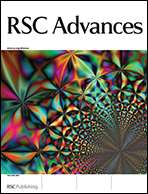The preparation and properties of Cu doped TS-1 zeolite
Abstract
A modified hydrothermal method was used to synthesize Cu doped TS-1 zeolite (Cu-TS-1) from TEOS, TBOT and Cu(CH3COO)2 with TPAOH as the template. The impregnation of TS-1 with aqueous solution of Cu(NO3)2 was also carried out to introduce Cu species onto TS-1 to obtain Cu/TS-1 catalyst. The TS-1, Cu/TS-1 and Cu-TS-1 samples were characterized by XRD, XPS, SEM, UV-VIS, FT-IR, Raman and NH3-TPD-MS to reveal the effect of the preparation procedure and Cu contents on the properties of Cu-TS-1 zeolite samples. Cu species doped via the modified hydrothermal method made the crystal shape of the samples change from round to polygon, however, the crystal shape was almost unchanged when Cu species was doped via wet impregnation. A proper amount of Cu species in the Cu-TS-1 zeolite could promote the crystallization of MFI structure and limit the formation of extra-framework TiO2. The Cu-TS-1 zeolite was employed as a catalyst in the nitration of benzene with ammonium acetate as the nitrating agent and hydrogen peroxide as the oxidizing agent under mild conditions. The synergetic effect of doped Cu and TS-1 zeolite with MFI structure restrained the hydroxylation reaction, and increased the yield and selectivity to nitrobenzene. 47.8 μmol (about 0.4%) yield and 57.0% selectivity to nitrobenzene with a ITOF = 9.6 h−1 and a IITOF = 38.3 h−1 were obtained on Cu-TS-1 (1.76 wt% Cu content) catalyst under optimized reaction conditions.


 Please wait while we load your content...
Please wait while we load your content...